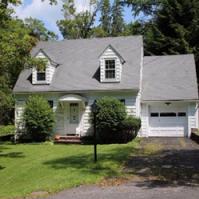About Village of Fleischmanns


The Village of Fleischmanns was created in 1913, consolidating what had been two separate areas. Dating back to at least the 1830s, the hamlet of Griffin's Corners grew on what is now the east end of the village. It was named after Matthew Griffin, an early settler, and quite the jack-of-all-trades. Griffin was first Postmaster here, was a lawyer and ran a hotel and store, and even served in the State Assembly. The Griffin's Corners Post Office opened in 1851.
In the 1870s, a railroad was built from Kingston and was eventually known as the Ulster & Delaware Railroad. The new mode of transportation suddenly opened the area to visitors from New York City, and from farther away. A trip that had taken many difficult hours (or days) on the rough roads suddenly became a matter of hours.
Local farmers quickly found that they could make money hosting summer visitors trying to escape from the heat in pre-air conditioning New York City. A number of large and medium-sized hotels and guest houses were built. Most impressive of all, the wealthy Fleischmann family (of yeast fame and fortune) purchased land above the railroad, overlooking Griffin's Corners, where they built a family compound with five mansions and many outbuildings. Picture a 19th-century version of the Kennedy compound at Hyannis.) This encouraged many others from NYC to build their own summer homes, and for many decades the area around Fleischmanns absolutely boomed in the summers. Dr. Skene, after whom the library is named, was one such part-time resident.
By 1888 there was a separate Fleischmanns Post Office, serving the booming business at the west end of town; Bridge Street was the dividing line between the two areas.
In 1906, work began on a dam on the outskirts of the village; by 1907 Lake Switzerland had changed the views and the life of the community. New hotels were built on either side, and there was something of a real estate boom.
